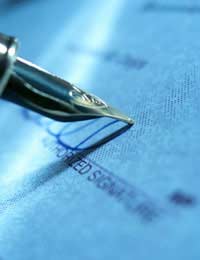Claim Your Business Tax Credits

Thousands of entrepreneurs are not claiming research and development (R&D) business tax credits from HMRC. One reason is the misunderstanding about the term “R&D”. Another is the complexity of the scheme: the HMRC guidelines are more than 1,000 pages long.
Nonetheless, these business tax credits average around £20,000 each. Some entrepreneurs have even managed to claim back six-figure sums. This money reduces a company’s tax bill, and for qualifying small or medium-sized businesses it may even come in the form of cash.
R&D
The government has a legal definition of research and development that doesn’t necessarily match what many entrepreneurs understand by the term in the commercial world.In broad terms, R&D refers to a project that aims to improve knowledge or capability in science or technology. Such an improvement must apply to the overall scientific or technological fields and not solely to the knowledge or capability within a business.
Some consultants who give advice about R&D tax credits also say that a business doesn’t have to engage in research as well as development. Product development alone may be enough to allow a company to qualify for help.
Two Types of Help
Those entrepreneurs who believe they conduct qualifying R&D may be able to claim two types of tax assistance. The first is an R&D tax allowance; the other is R&D tax relief.Tax Allowances
The tax allowances apply to most research and development capital expenditure apart from dwelling and land purchases.The allowance is 100%. An entrepreneur can therefore reduce taxable profits by the full amount of R&D within the financial year. If a business makes a loss, an entrepreneur can take this forward and offset it against future profits.
Tax Reliefs
There are two research and development tax relief schemes. The first applies to micro, small and medium-sized enterprises (SMEs); the second applies to large businesses.The main qualifying conditions for the first scheme are as follows.
- An entrepreneur mustspend at least £10,000 per year on R&Down any intellectual property that the R&D createsnot be working under contract not be receiving state aid for the projectnot be a sole trader or in a partnership arrangement
Furthermore, an entrepreneur cannot claim for expenditure supplied by another business.
The relief comes as 175% of qualifying expenditure against taxable profits. If this causes a loss, an entrepreneur can ask to surrender it in return for a cash credit that represents up to 14% of the loss.
With the large company R&D scheme, an entrepreneur should contact HMRC to discuss possible tax relief. If a business can make a claim, the relief is 130% of R&D qualifying expenditure against taxable profits. Entrepreneurs cannot claim for a cash credit by surrendering any loss.
Making a Claim
Limited companies can claim R&D tax allowances on their corporation tax returns. Sole traders can make the claim on an HMRC self-assessment income tax return.To make claims for R&D tax reliefs, entrepreneurs running micro businesses, SMEs or large companies must complete the relevant section of their corporation tax returns.
In all instances of R&D claims, entrepreneurs should give explanations of expenditure on their tax returns and seek advice from HMRC if necessary.
Business energy with a difference
Looking for better business energy options? Whether it’s advanced monitoring, new connections, or adjusting capacity, our sponsor, Purely Energy can help.
📞 Call 0161 521 3400 or simply send us your details below for a no-obligation chat.
Sponsored by Purely Energy
Purely kindly sponsors this site. They help businesses deal with all aspects from securing the lowest prices, capacity upgrades, usage monitoring using their proprietory software, Purely Insights, and many other aspects. Need help with your commercial energy? Enter your details below and they’ll get back to you.
- A Guide to Late Payment Regulations
- Can European Banking Services Help UK Businesses?
- A Guide to Business Insurance
- Claim Your Business Tax Credits
- What Are Venture Capital Trusts?
- How to Choose a Commercial Insurer
- How to Choose the Bank That's Right for You
- What Government Grants Can You Get?
- How to Borrow Money That's Tax Efficient
- Why You Should Consider Leasing
- Who are Venture Capitalists?
- An Introduction to Angel Investors
- Tips on Making a Pitch for Finance
- Do's and Don'ts of Using Your Own Money
- Do You Want to Get Friends and Family Involved?
- Cut Your Business Costs
- Prove Your Reliability and Commitment to the Business



